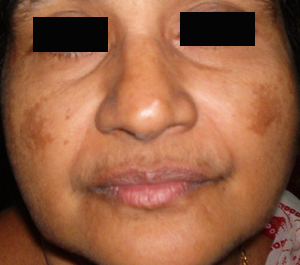
1. What is melasma?
Melasma, also called 'chloasma', is a common skin condition of adults in which light to dark brown or greyish pigmentation develops, mainly on the face. It typically appears on the upper cheeks, upper lip, forehead, and chin but it also can appear on other parts of the body that exposed to sun, such as the forearms and neck. Although it can affect both genders and any race, it is more common in women and people with darker skin-types who live in sunny climates. It is not an infection, it is not contagious and it is not due to an allergy. Also, it is not cancerous and will not change into skin cancer.
2. What causes melasma?
The exact cause is not known, but several factors contribute. These include pregnancy, hormonal drugs such as the contraceptive pill, and very occasionally medical conditions affecting hormone levels.
It is so common during pregnancy that some people call it the mask of pregnancy. Some cosmetics that contain perfumes, turmeric, sandal, hair color can increase photo sentivity that increase melasma.
3. What is the treatment for melasma?
Melasma can fade on its own. This often happens when a trigger is causing the melasma, such as a pregnancy or birth control pills. When the woman delivers the baby or stops taking the birth control pills, melasma can fade. Some people, however, have melasma for years or even a lifetime.
If a topical medicine does not get rid of your melasma, cosmetic procedures like chemical peel, microdermabrasion and IPL may succeed, depending on the patient.


